Translated by Zameelur Rahman
Question:
Today I happened to see a piece in Akhbar al-Jumu‘ah by Sayyid Sulayman Sahib Nadwi, in which the aforementioned Sayyid Sahib wrote [in response to the report] of the destruction of some birth places and shrines under the oppressive hand of the Najdis, which was publicised in some newspapers: firstly, this has not reached the level of certainty; secondly, the shrines and birth places mentioned are not the original [structures], but are the constructions of the caliphs of the Banu Umayyah and the Abbasids, and there is no difficulty in destroying them; thirdly, there are innovated traditions that occur at those shrines which must be blocked; fourthly, those graves appear similar to mosques.
If this explanation is correct, is not the blessed dome of the leader of existents (Allah bless him and grant him peace) included in this category, and if it is included [in it], is such conduct also permissible with it?
Inform [us] of the correct reply.
Answer:
Making an analogy of the master of graves, meaning the grave of the master of the inhabitants of graves – Allah bless him and grant him peace as long as the eastern and western winds alternate –, with other graves, is an invalid analogy. It is clearly stated in hadiths that his burial is commanded in the place of death [1]The hadith, “No prophet is buried except in the place he died,” was narrated from Abu Bakr (both as a marfu‘ hadith and a mawquf narration) with various wordings by Ibn ‘Abbas, ‘A’ishah, … Continue reading, and [his] place of death was a house that comprised of walls and a roof. It is inferred from this that there is permission for the construction of walls and a roof over his grave. The prohibition which has been transmitted on building over graves [2]Muslim narrates in his Sahih from Jabir ibn ‘Abd Allah (Allah be pleased with him) that the Prophet (peace and blessings be upon him) forbade building over graves (Sahih Muslim, Kitab al-Jana’iz, … Continue reading is when the structure is for the grave, and here this is not so.
What remains is [the question of] its persistence and conservation. Since after the burial, none of the rightly-guided caliphs condemned the persistence of this structure, rather, on one occasion when there was an extreme need to seek rain only a hole was made in the roof [3]Al-Darimi narrates in his Musnad from Abu l-Jawza’ that there was a severe drought in Madinah, so the people of Madinah complained to ‘A’ishah (Allah be pleased with her), who told them, … Continue reading, the legality of the persistence of this building is inferred. It is obvious that the persistence of these things without giving special attention to [their] conservation is not normally possible. Hence, the requirement of giving special attention to its conservation has also been established. And since strengthening the building is more effective for [the purpose of its] conservation, this being an objective [of the Shari‘ah] is also established.
[This is] especially [the case] since there are also other interests of the Shari‘ah in this:
For example, keeping the pure body of the holy Prophet (Allah bless him and grant him peace) safe from the enemies of religion, as their authority [over it] – we seeking protection in Allah from it – will certainly be a cause for disrespecting [it], and respecting the blessed body being an objective [of the Shari‘ah] is from the most manifest of self-evident truths. And the scholars of the secrets [of the Shari‘ah] based the absence of a clear martyrdom for him on this wisdom [4]The Prophet (peace and blessings be upon him) attained the rank of martyrdom, but not clearly or manifestly. His final illness was a result of the effects of partaking from poisoned food given to him … Continue reading.
And for example, to keep his fragrant grave hidden from [his] lovers, as there is a possibility that in seeing it they may be overcome by love, leading to transgressing the bounds of Shari‘ah; just as in the illness of death, after some time, seeing the Prophet’s (Allah bless him and grant him peace) illumined face, the system of prayer was almost overturned [5]As reported in Sahih al-Bukhari and other collections of hadith. (Translator) , the image of which was captured in this couplet by Hazrat Shaykh Dihlawi (Allah have mercy on him):
When in prayer the remembrance of the curve of your eyebrow comes,
The situation is reached that the prayer niche begins to cry out
And since these two matters cannot be preserved without giving special attention to the maintenance of the structure and [its] reinforcement, this attention [to the preservation of the structure] also became an objective because it is a prelude to objectives [of the Shari‘ah].
Furthermore, the illuminated grave is located in such a place that behind it is a portion of the mosque. Therefore, without a barrier, prostration would occur towards the grave. Hence, this structure also fulfils the function of a barrier.
Thus, it is established that just like “which of you is like me?” [6]These words, reported in Sahih al-Bukhari, were said by the Prophet (peace and blessings be upon him) in response to the question of why he performed uninterrupted fasts (wisal) although others from … Continue reading the decree, “the grave of which of you is like my grave?” has been given. And Allah knows best.
Subtle Point:
After writing this, taking Mathnawi Ma‘nawi, I prayed, “My lord, if what was written is correct, then bring out some meaning from the Mathnawi that supports its being correct,” and saying “bismillah,” I opened it, and these verses appeared at the start of the page, which very clearly support [my answer]:
You did not make this [intercession], for assuredly I made it,
O you whose qualities are buried in My qualities.
In this, you are the one employed to do the work, not the doer,
Inasmuch as you are borne by Me and are not the bearer.
You have become [the embodiment of] ‘You did not throw when you threw’ (Qur’an 8:17):
Like the foam, you have abandoned yourself in the wave.
You have become ‘no’; make your home beside ‘except.’ [7]A reference to the declaration of faith, “There is no god except Allah.” (Translator)
How strange, that you are both a prisoner and a prince. [8]Amended from Reynold Nicholson’s translation of the Mathnawi (Book IV, stanza 2945) Perhaps this passage correlates with the answer given by Hakim al-Ummah as it refers to the hand of Allah over … Continue reading
Note: I believe it is possible to base this answer on knowledge [of the Shari‘ah] [9]It is disliked to be buried in houses due to its particularity with the Prophets (upon them blessings). Al-Kamal said: “Neither a minor, nor an adult, is to be buried in the house in which he died, … Continue reading. Some believe it is based only on love.
1344 H, 20 Safar (September, 1925)
Eliminating Doubts about the Graves of the two Shaykhs
On this answer another question came from a different place, which is quoted with its answer in the following:
Question:
This doubt now remains that why are the graves of the two revered shaykhs not included in this [ruling on the prohibition of building structures over graves]? No answer to this comes to [my] mind besides this: that the dream Hazrat ‘A’ishah al-Siddiqah saw that three suns or three moons descended into her chamber (at this moment I cannot remember accurately whether it was suns or moons) [10]The narration mentions “three moons,” not suns. (Translator) , and at the time of the death [of the Prophet (peace be upon him)], Hazrat Abu Bakr al-Siddiq (Allah, exalted is He, be pleased with him) said that one moon is the revered leader of existents (Allah bless him and grant him peace) [11]This dream of ‘A’ishah and the interpretation of Abu Bakr (Allah be pleased with them) can be found in Malik’s Muwatta’ (Awjaz al-Masalik, Dar al-Qalam ed. 4:510-2) (Translator) , and other tidings besides this, may be the reason why the two revered shaykhs were buried here. The upshot of this is that the two revered shaykhs were buried there secondarily, and the renovations of Hazrat ‘Umar ibn ‘Abd al-‘Aziz (Allah have mercy on him), was in reality for the revered leader of existents, not primarily for the two revered shaykhs. Besides this, no other answer comes to [my] mind.
Answer:
The whole answer is correct and in agreement with the principles [of Shari‘ah]. It is [also] supported by other narrations. They are these:
- [It is narrated] from Ibn ‘Umar that the Prophet (Allah bless him and grant him peace) came out one day and entered the mosque with Abu Bakr and ‘Umar, one to his right and the other to his left, while holding their hands. Thereupon, he said: “This is how we will be resurrected on the Day of Resurrection.” Al-Tirmidhi narrated it and he said: “This is an uncommon hadith.”
- [It is narrated] from Ibn ‘Abbas, he said: “I was indeed standing amongst a group, and they were supplicating to Allah for ‘Umar, when he had been put on his bier, and suddenly a man from behind me had placed his elbow on my shoulder, saying: ‘Allah have mercy on you! Verily, I used to wish that Allah will place you amongst your two companions, because frequently I would hear the Messenger of Allah (Allah bless him and grant him peace) say: ‘I, Abu Bakr and ‘Umar were,’ ‘I, Abu Bakr and ‘Umar did,’ ‘I, Abu Bakr and ‘Umar entered,’ ‘I, Abu Bakr and ‘Umar exited.’’ I turned and, behold, it was ‘Ali ibn Abi Talib.” [This is] agreed upon [by Bukhari and Muslim] in the chapters on the virtues of Abu Bakr and ‘Umar.
- And in Mishkat al-Masabih, Bab Nuzul ‘Isa ibn Maryam, [it is narrated] from ‘Abd Allah ibn ‘Umar, he said: The Messenger of Allah (Allah bless him and grant him peace) said: “‘Isa ibn Maryam will descend on the earth, marry and father [children], and he will remain for forty-five years, and then he will die and be buried with me in my grave, so I and ‘Isa ibn Maryam will stand in one grave in between Abu Bakr and ‘Umar.” Ibn al-Jawzi narrated it in Kitab al-Wafa’.
- And al-Tirmidhi narrated at the end of Abwab al-Manaqib from Abu Mawdud al-Madani: ‘Uthman ibn Dahhak narrated to us from Muhammad ibn Yusuf ibn ‘Abd Allah ibn ‘Abd Allah ibn Salam from his father from his grandfather, he said: “The description of Muhammad is written in the Torah, and ‘Isa ibn Maryam will be buried with him.” He said: Then Abu Mawdud said: “In the house, there yet remains the place of one grave.” This is a hasan and uncommon hadith.
- And in Khulasat al-Wafa’ by al-Samhudi at the end of the tenth chapter on the aforementioned hadith, [it is written]: Al-Tabrani’s wording in one narration is: “‘Isa ibn Maryam (upon him peace) will be buried with the Messenger of Allah (Allah bless him and grant him peace) and Abu Bakr and ‘Umar (Allah be pleased with them). Thus, it will be a fourth grave.” ‘Uthman ibn Dahhak is in it. He was declared trustworthy by Ibn Hibban and declared weak by Abu Dawud.
The first narration is almost explicit that the three revered personalities will be buried in one place, and the report of the lawgiver is indisputably proof of permission. The interpretation that after the resurrection they will again be reunited is far-fetched due to the words: “this is how we will be resurrected.” This is an indication of the process of the resurrection itself [and not what will happen after the resurrection].
This meaning is extracted subtly from the second narration, which is an [authoritative] proof because it is supported by [other] texts.
The third narration is clear just like the first narration. In fact, it is clearer than that. The possibility of the metaphorical meaning in the phrase, “I will stand,” is even more far-fetched, and is unnecessarily [adopting something] that has not been transmitted.
The fourth and fifth narrations together inform [us] that the burial of the two revered shaykhs in the house is mentioned in the Torah too. Hence, this is also established in the scriptures of those who came before us.
And the most important matter is that this happened in the time of the Sahabah, and no one issued any condemnation. Hence, a consensus was achieved on its permission. Now, whatever is the force of this consensus, for us, the consensus is sufficient as an [authoritative] proof of exception.
27 Rabi‘ al-Awwal, 1344 H (October, 1925)
Bawadir al-Nawadir, Lahore: Idarah Islamiyyat, pp. 350 – 2
| ↑1 | The hadith, “No prophet is buried except in the place he died,” was narrated from Abu Bakr (both as a marfu‘ hadith and a mawquf narration) with various wordings by Ibn ‘Abbas, ‘A’ishah, Salim ibn ‘Ubayd al-Ashja‘i and ‘Abd al-‘Aziz ibn Jurayj. It is authentic on account of its multiple routes which each strengthen the other, as stated by the editors of Musnad Ahmad. (see: Musnad Ahmad, Mu’assasat al-Risalah ed. 1:207) The hadith has been transmitted in Ibn Majah’s Sunan, al-Tirmidhi’s Jami‘ and al-Shama’il, Malik’s Muwatta’, Ahmad’s Musnad, ‘Abd al-Razzaq’s Musannaf, and other hadith collections. (Translator) |
|---|---|
| ↑2 | Muslim narrates in his Sahih from Jabir ibn ‘Abd Allah (Allah be pleased with him) that the Prophet (peace and blessings be upon him) forbade building over graves (Sahih Muslim, Kitab al-Jana’iz, Bab al-Nahy ‘an Tajsis al-Qubur wa l-Bina’ ‘alayha). He (peace and blessings be upon) also gave instructions to level raised graves, which is also reported in Sahih Muslim (Kitab al-Jana’iz, Bab al-Amr bi Taswiyat al-Qabr) on the authority of the companions, Fadalah ibn ‘Ubayd and ‘Ali ibn Abi Talib (Allah be pleased with them). (Translator) |
| ↑3 | Al-Darimi narrates in his Musnad from Abu l-Jawza’ that there was a severe drought in Madinah, so the people of Madinah complained to ‘A’ishah (Allah be pleased with her), who told them, “Look to the grave of the Prophet (Allah bless him and grant him peace) and make an opening from it to the sky so that there is no barrier between it and the sky,” and when they did this, rain fell. (Musnad al-Darimi, Husayn Salim Asad al-Darani ed. 1:227) The editor comments: “Its narrators are trustworthy.” (Translator) |
| ↑4 | The Prophet (peace and blessings be upon him) attained the rank of martyrdom, but not clearly or manifestly. His final illness was a result of the effects of partaking from poisoned food given to him by a Jewish woman at Khaybar. Here Mawlana Thanawi states that the ‘ulama’ on the science of “the secrets of the Shari‘ah” explained that the reason why he did not experience a clear and manifest martyrdom is that this would violate the sanctity of his body. (Translator) |
| ↑5 | As reported in Sahih al-Bukhari and other collections of hadith. (Translator) |
| ↑6 | These words, reported in Sahih al-Bukhari, were said by the Prophet (peace and blessings be upon him) in response to the question of why he performed uninterrupted fasts (wisal) although others from his nation were forbidden from it. (Translator) |
| ↑7 | A reference to the declaration of faith, “There is no god except Allah.” (Translator) |
| ↑8 | Amended from Reynold Nicholson’s translation of the Mathnawi (Book IV, stanza 2945) Perhaps this passage correlates with the answer given by Hakim al-Ummah as it refers to the hand of Allah over everything that emanated from the Prophet (peace and blessings be upon him), and seeing as his death, place of burial, and the later structures built around it, all seemed to happen organically, there is an indication that this too happened by the will and choice of Allah and not by a manmade plan. Making his home besides “except,” meaning “except Allah,” may also support the answer by alluding to his final resting place being within the confines of one of the houses of Allah. (Translator) |
| ↑9 | It is disliked to be buried in houses due to its particularity with the Prophets (upon them blessings). Al-Kamal said: “Neither a minor, nor an adult, is to be buried in the house in which he died, because that is specific to the prophets (upon them blessings and peace). Rather, he is to be buried in the burial places of the Muslims.” (Maraqi al-Falah) |
| ↑10 | The narration mentions “three moons,” not suns. (Translator) |
| ↑11 | This dream of ‘A’ishah and the interpretation of Abu Bakr (Allah be pleased with them) can be found in Malik’s Muwatta’ (Awjaz al-Masalik, Dar al-Qalam ed. 4:510-2) (Translator) |

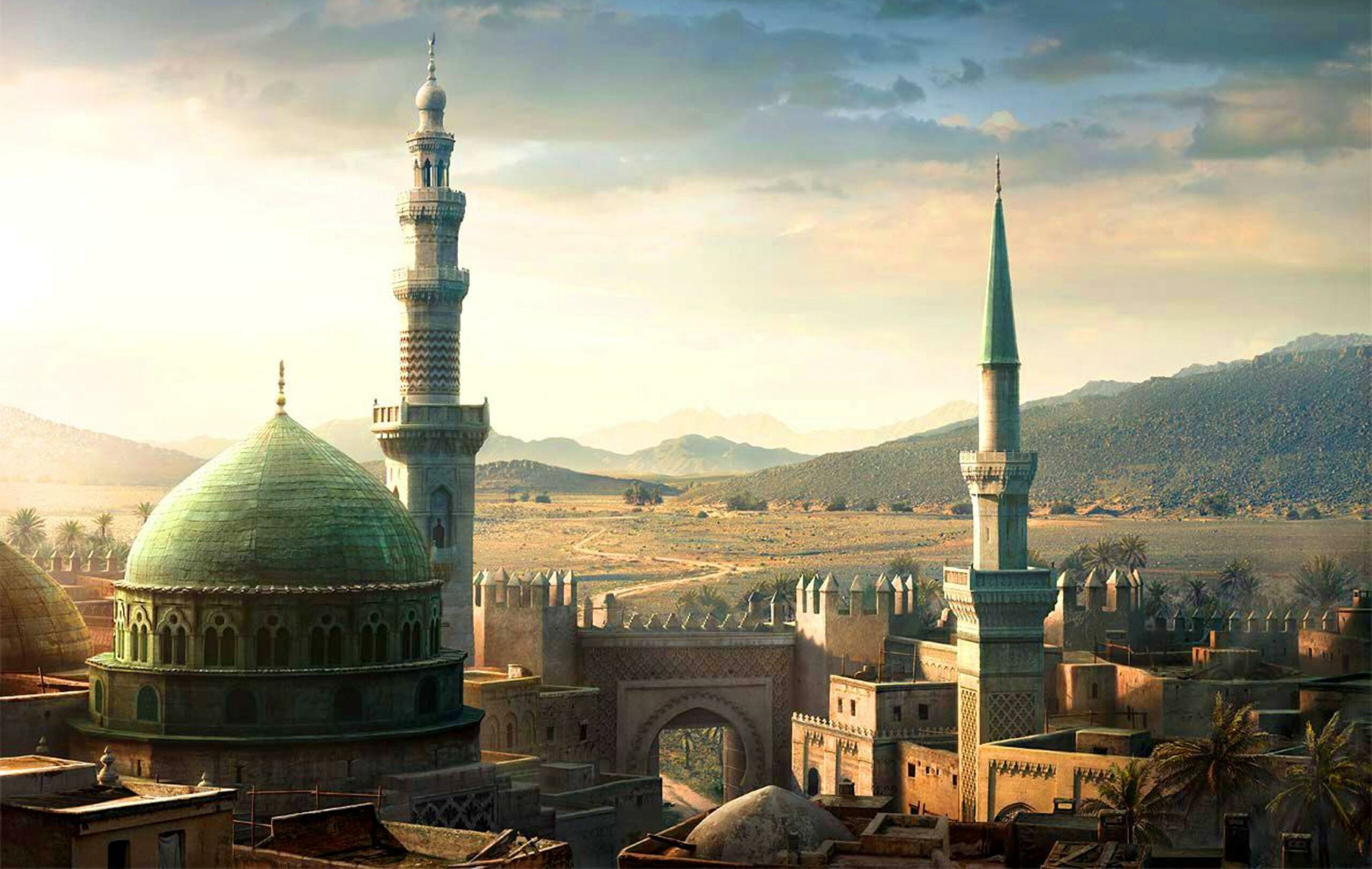
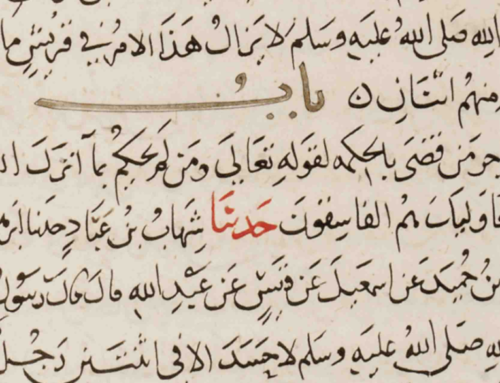
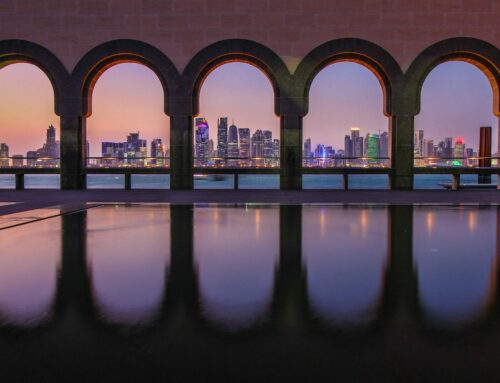
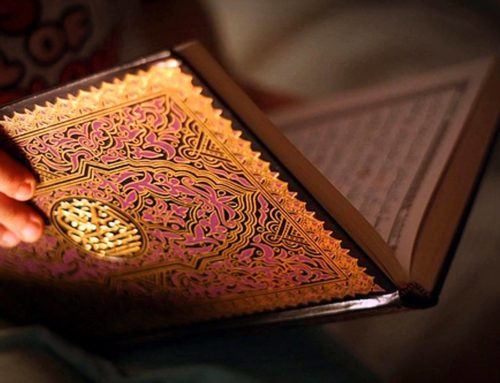
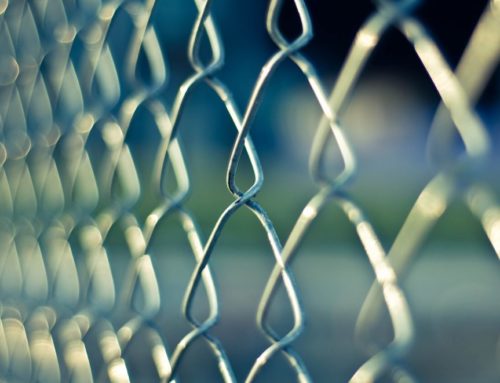
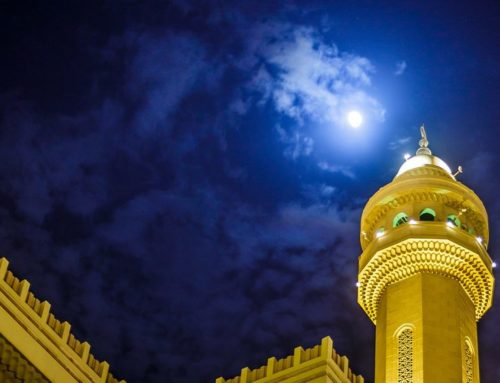
What a beautiful piece, subhanallah.